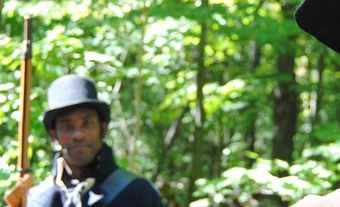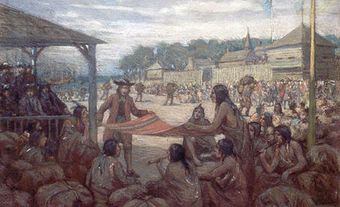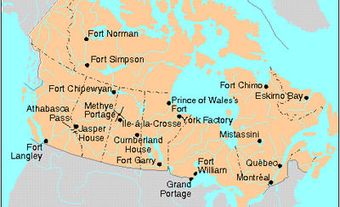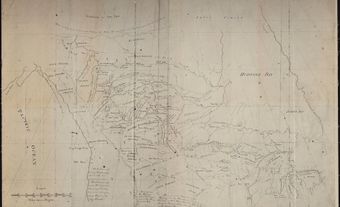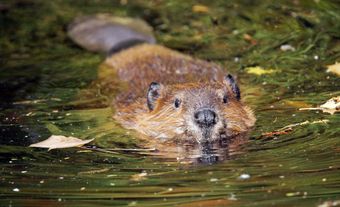Joseph Lewis, alias Levi Johnston, also Lewes and Louis, fur trader (born c. 1772–73 in Manchester, New Hampshire; died 1820 in Saskatchewan District). Joseph Lewis was a Black fur trader, originally from the United States, who participated in the fur industry’s early expansion into the Canadian Northwest in the late 18th and early 19th centuries. He is one of very few Black people involved in the fur trade whose name was documented in existing texts. Joseph Lewis is further notable for being the first Black person in present-day Saskatchewan, as well as, in all likelihood, Alberta.

Black Fur Traders
Although fur trading comprises some of Canada’s most important early history, the presence of Black Canadians within that history has been largely overlooked. In part, this omission is due to historians’ interests lying elsewhere, but it has also been cultivated by a simple but powerful misconception: the history that concerns Black people in North America is essentially confined to the United States and warmer locations farther south.
Many Canadians are aware of York, the African American who accompanied Lewis and Clark, but few can name a Canadian who acted in a similar capacity. Yet, France’s Code Noir, though not formally adopted in New France, was customarily considered as a guide for how enslaved persons — both African and Indigenous — could be treated, acquired, exchanged and accounted for as property (see Enslavement of Indigenous People in Canada, Black Enslavement in Canada).
With the wealth produced by the fur trade came people who enslaved other people. Sometimes, fur traders themselves were among Canada’s slave holders. Though, for some Black people, pursuing their fortunes in the fur trade was likely a means of escape from slavery, they were nonetheless still subject to power structures that often placed them at a disadvantage compared to others in similar positions. Often, they worked in relatively low positions, as middlemen (paddlers positioned in the middle of a canoe) or labourers, though occasionally they could be steersmen, which was considered a skilled role (see Voyageur). But they also often served in the very important role of translator because of a familial connection to Indigenous people.
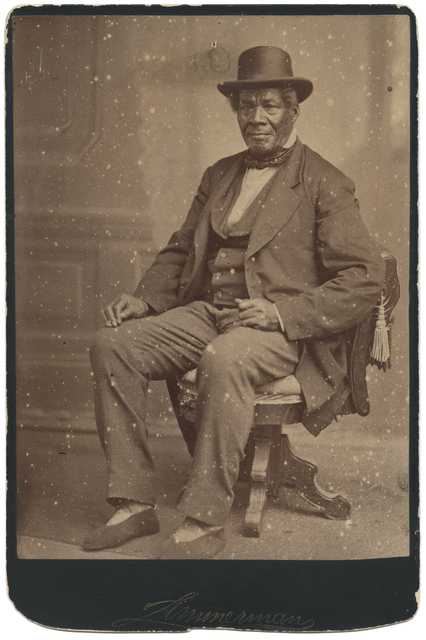
Early Life
Very little is known of Joseph Lewis’s early life and all references to him occur in brief, indirect commentary, sometimes only as a footnote. Even Lewis’s name is the subject of uncertainty. His last name is variously spelled as Lewis, Louis or Lewes. In several documents it is also made clear that he previously or also went by the name Levi Johnston.
Lewis was most likely born in Manchester, New Hampshire, though it is unclear whether he was enslaved, an indentured servant, or simply a freeman. Three factors suggest he may have been French speaking: the variant spelling of “Louis,” a mention of his “tolerable good” English, and the fact that he entered into service with HBC carrying a certain amount of debt. Ultimately, however, Lewis’s early life has more mystery about it than confirmed fact.
Although New England is often assumed to be primarily populated by abolitionist-minded Europeans and largely free of slaves, in the 1700s New Hampshire was a landing point for slaves shipped from Africa. In fact, New Hampshire did not definitively abolish slavery until it was outlawed across the nation at the end of the American Civil War in 1865. Prior to that, the state was a hub for the slave trade as New Hampshire did not place a tax on imported slaves, establishing itself as a site for distributing slaves to the rest of the colonies.
Lewis was identified as a “mulatto,” which suggests that his father may have been a slave owner and his mother a slave. However, there is no conclusive evidence of this fact, and he is also given several other identifiers of which “coloured” is more frequently applied.
Portsmouth, which is just east of Manchester, held the largest number of Africans in New Hampshire. This changed during the years just before and after the American Revolution when many slaves escaped to join the cause of American liberty or, more practically, to join the British forces, who tempted them to oppose the revolution with the promise of freedom. The population of slaves in the state dropped precipitously between 1773 and 1786. Though we do not know exactly when Lewis left New England, it is possible that his move to Canada was informed by these factors.
Career in the Fur Trade
Joseph Lewis first worked for a Canadian outfit, possibly the North West Company, though this is not certain. The North West Company was a fur trading company based in Montreal that developed an intense rivalry with the Hudson’s Bay Company. In 1795, however, Lewis made a request to a representative at Carlton House (one of the trading posts set up by HBC) asking to work for the rival company. The Hudson’s Bay Company accepted his offer and in 1796 he entered a three-year contract as a steersman.
Over the next decades of his career, Lewis served at several important fur trading centres, including Jack River House (in present-day Manitoba), Island House (Alberta), Bolsover House (Meadow Lake, Saskatchewan), Greenwich House (Lac la Biche, Alberta), and Fort Edmonton. He also participated in an expedition over the Rocky Mountains in 1810–11, just a few years after David Thompson crossed the Rockies.
Family and Personal Life
As was common with so many fur traders, Joseph Lewis married an Indigenous woman whose name and nation went unrecorded. He had three children, all of whom settled in the Red River area. Lewis eventually retired and by 1814 had settled in Saskatchewan District. He was killed by a Blackfoot man in 1820. No details about the encounter survive.
Significance and Legacy
Joseph Lewis is important for being one of only a few Black people documented by name, living and working in the fur trading industry in Canada’s early Northwest (today’s Prairie provinces). While evidence of their presence is scattered throughout historical texts, very few are actually named (Glasgow Crawford and the Bonga family are two other rare instances). Lewis was also among the first Black people to settle in this area and is in all likelihood the first Black person on record in both Saskatchewan and Alberta. Lewis’s story is also important for revealing historical interactions between Canada’s Black and Indigenous populations, as well as the complicated ways in which two profound economic forces, fur trading and enslavement, intersected.

 Share on Facebook
Share on Facebook Share on X
Share on X Share by Email
Share by Email Share on Google Classroom
Share on Google Classroom
